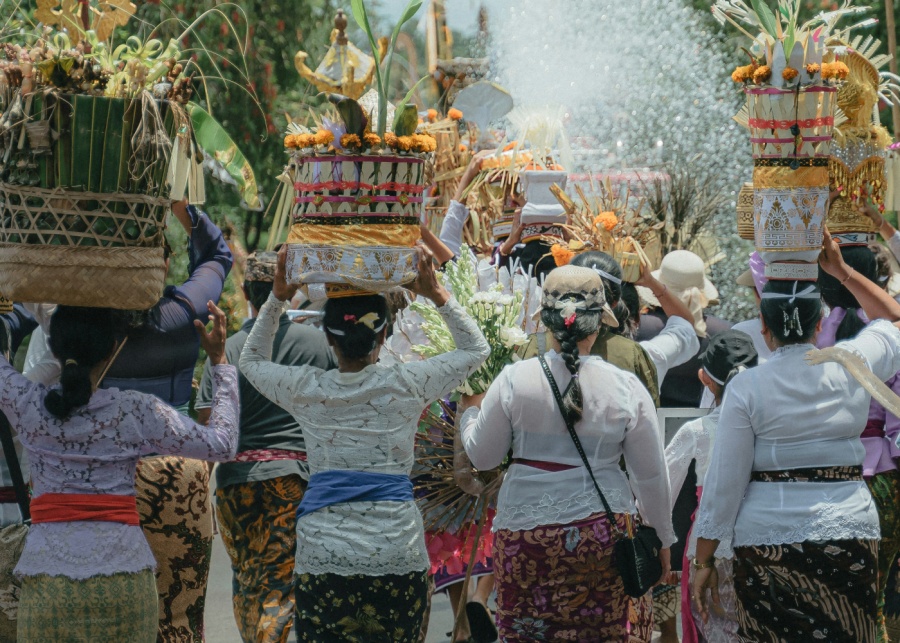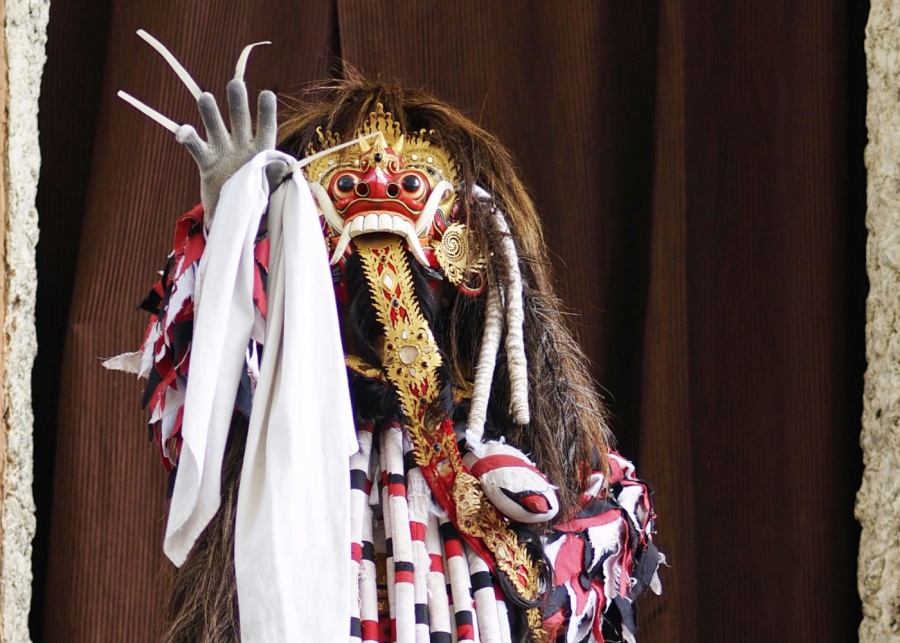
Here, Dr Ravinjay unpacks the cultural, spiritual, and patriarchal reasons behind why menstruation is prohibited at Balinese temples.
When visiting Balinese temples, most tourist might wonder why the entry sign forbids women from entering during their monthly cycle. The menstrual cycle is a perfectly normal part of the female anatomy, and restrictions based on it are typically viewed as ignorant. However, the role of menstruation and the esoteric meaning behind it serves as its reason for being regarded as unfit for a temple. Here I unpack the different reasons as to why menstruating women are banned from temples in Bali.

A Practical Perspective: Women’s Roles in Society
There are several layers to unpack, beginning with the most obvious: women on their periods need more time to rest, and restricting them from temple activities allows women to take their much needed break. Women play a major role in Balinese society, especially in religious events. They are the backbone of the family, work in the fields and even carry bricks for construction! They are the ones in charge of making all the offerings, and even conducting the ceremonies as well. This is all on top of their regular day jobs, plus the responsibilities of managing the household, kitchen and kids. Men take the leadership roles in traditional society, as well as the creative jobs such as mask making, painting and carving.
The Concept of Ritual Purity: Blood and Temple Restrictions
The next reason is that any kind of blood is not permitted on temple grounds, unless it is an offering. Therefore, any open wounds must be covered to ensure that none drips on the temple floor. The blood from a newly-cut wound or from a sacrificed animal, however, is considered “living” blood, as they carry the life force (AKA oxygen) fit for offering. Menstruation blood, however, is considered “dead” blood as it is biological matter that is being expelled from the body. Therefore, for the Balinese (and many other traditional societies around the world), menstruation blood is considered impure or “cuntaka” (tainted). Every village has their own rules for what makes one tainted, but generally it includes menstruation and the period of mourning after a family member’s death.
Purity in Religious Practices: A Common Theme Across Cultures
Next, this brings us to the concept of ritual purity, or the idea that one needs to be pure for ritual. This may include undergoing initiation (or baptism), taking some sort of bath, or being in a fit spiritual and physical condition. This is present in all religions and cultures. For example, clean, freshly washed clothes must be used in ritual. Or only fresh fruits and produce that have not been tasted are fit for offering. This is the general perception of most religions — that the human body and its byproducts are unclean and ungodly.

Hindu Texts and the Role of Women in Hinduism
In Hinduism, females in general are considered inferior to men. In the Ṛig Veda, the earliest Hindu scripture, Lord Indra incurred sin and passed that sin down to women as a blessing and a curse. The blessing to create life, and the curse of menstruation. The same Lord Indra also refused to be born of his mother’s vagina, afraid of being impure, and ripped open his mother’s womb at birth instead. This is a hard fact to swallow for most Hindus, even though many religious laws continue to see females as inferior to men.
Goddess Worship vs. Patriarchy in Hinduism
Oddly enough, Hinduism and its Vedas spread across the Indian subcontinent, which is home to many folk religions that prefer the worship of the Divine Goddess. In almost every village in India, there are female deities who are indigenous to the tribe, long before Hinduism spread to dominate their belief system. This is why the worship of Durgā or Śakti is extremely popular in India, and the role of the Goddess has risen to prominence. This is not the case in Bali. The female goddesses are still inferior wives of the male gods. And the extremely powerful Rangda, the ferocious Javanese-Balinese form of the Goddess Durgā, is seen as a dangerous witch, residing in graveyards. Nonetheless, she is revered and regarded as a protector, although mostly out of fear of her mystical abilities.
Esoteric Reasons: Energy Flow and Menstruation
So far, we have explored the superficial reasons behind the taboo of menstruation. However, there are more esoteric reasons behind why menstruation is not permitted in places of worship. Worship involves an upward flow of energy, whilst menstruation is a downward flow. Energy or “prāṇa” flows throughout the body giving it life and health. In prayer, focus is made to the crown chakra on the top of the head. This is the entry point for our connection to the universe. During one’s period, however, energy flow goes downward. Places of worship require collective upward focus, and the presence of a downward flow could be dangerous for that person, causing an imbalance of energies.
Creation, Destruction, and the Fear of Menstruation
The monthly cycles of a woman are called “ritu” in Sanskrit, the same name for the changing seasons. The body is seen as a reflection of the universe, and thus its cycles mimic the nature around us. Just as women can nurture and bring forth life, portrayed as the motherly Goddess Umā, they can also be the cause of great destruction, portrayed as the terrifying Goddess Kālī. In the practice of Tantric Yoga, this power of creativity and destruction are used to advance one’s own spiritual progress. The destructive nature of a period, however, is dangerous to others, especially to society and men. It is out of this fear that women are kept in isolation away from society, especially for the first few days of her period. And this is also why women on their periods are banned from entry into religious and social functions.
Patriarchy or Tradition? Finding a Balance
The reason behind why females are not permitted in religious Hindu functions, both in India and Bali, are indeed acts of patriarchy. However, it is rooted in the wisdom of upward and downward energies, as well as creation and destruction cycles. There are contrasting opinions on feminism in all societies, however, the aim of Hinduism and other Dharmic religions are that of balance and harmony.
Love this article?
Read more from Dr. Ravinjay Kuckreja here – a Religious Studies lecturer and expert in ancient Balinese and Indian scriptures. Dr. Ravinjay is also the host of the Being Bali podcast, which is dedicated to explaining all about Balinese culture, history and religion.
